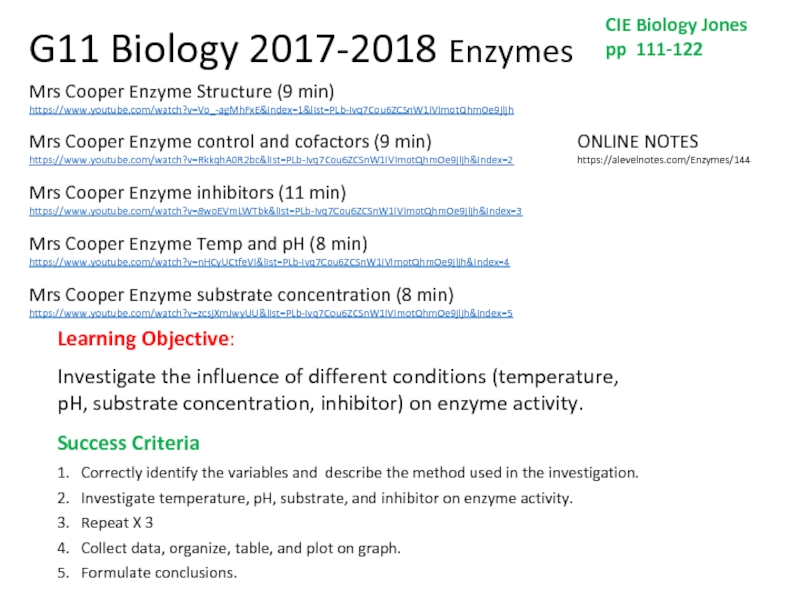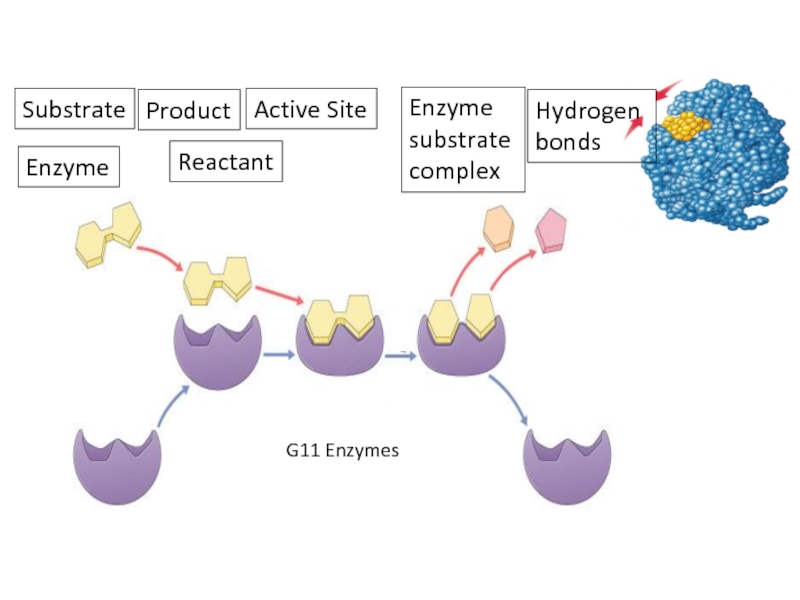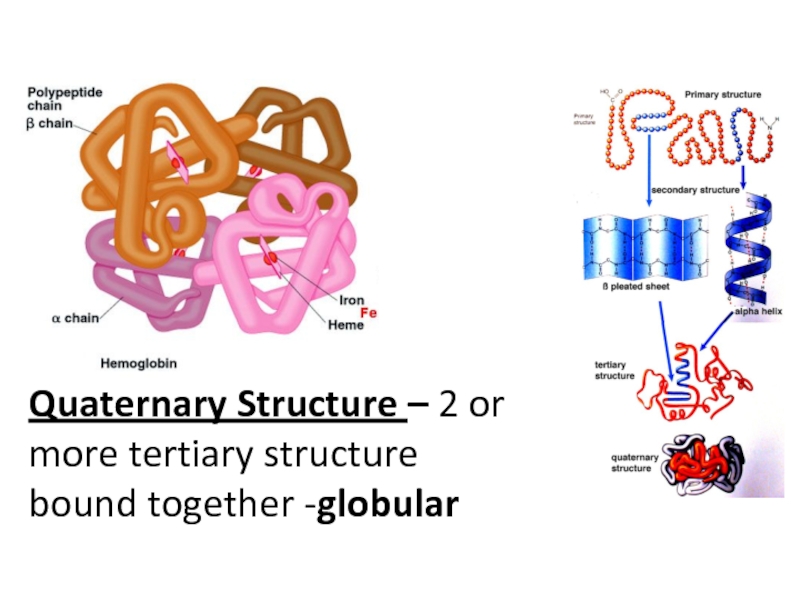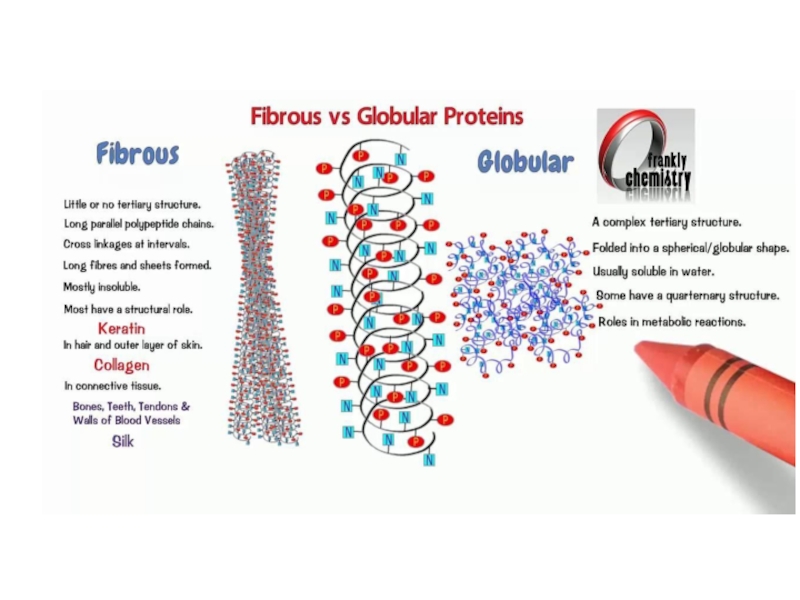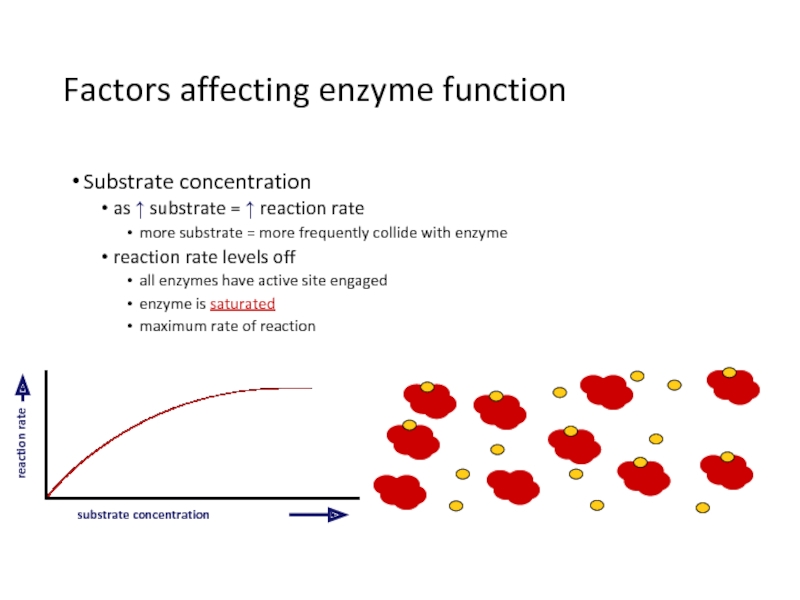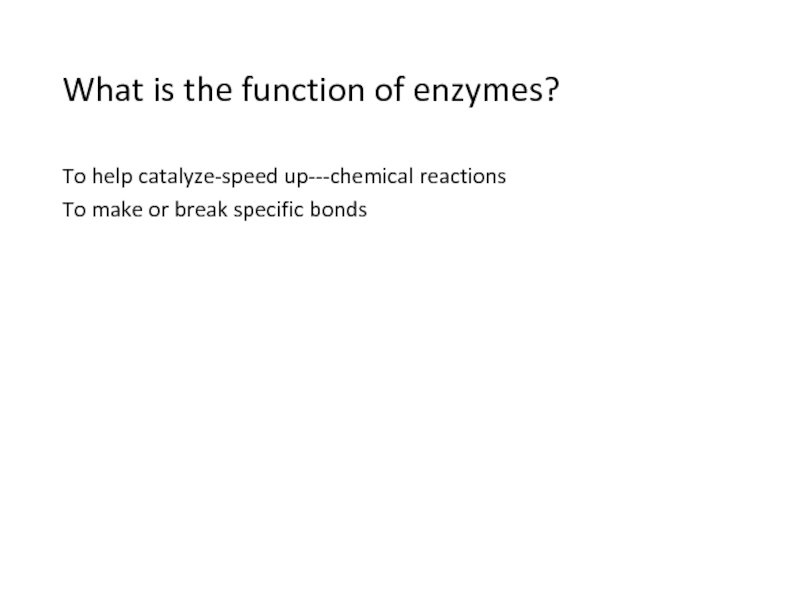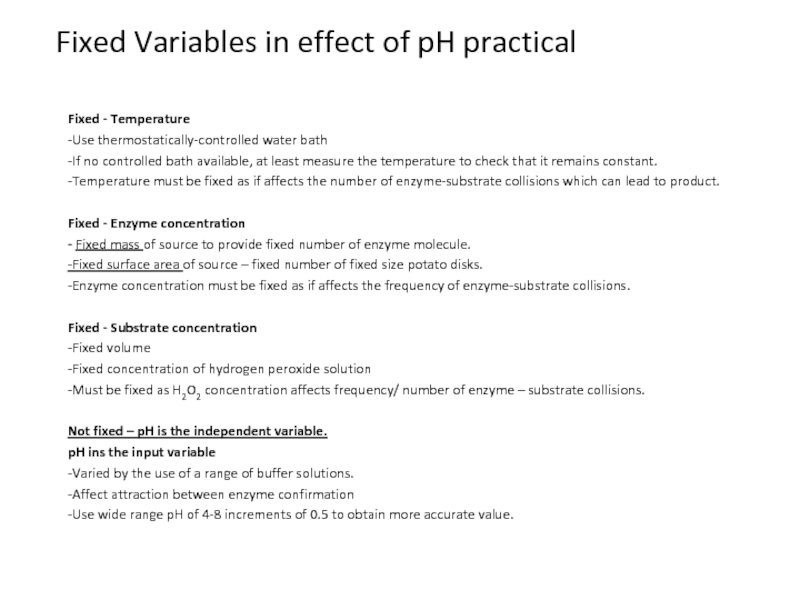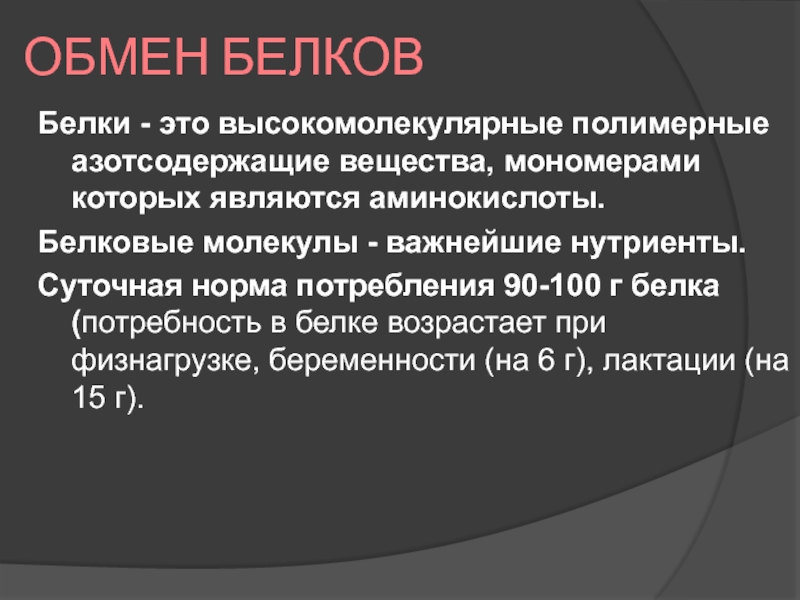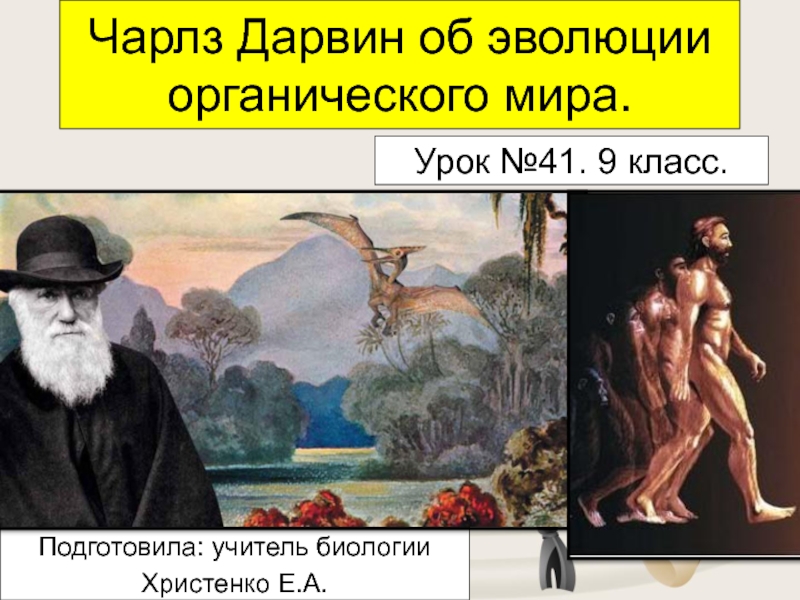Success Criteria
1. Correctly identify the variables and describe the method used in the investigation.
2. Investigate temperature, pH, substrate, and inhibitor on enzyme activity.
3. Repeat X 3
4. Collect data, organize, table, and plot on graph.
5. Formulate conclusions.
Mrs Cooper Enzyme Structure (9 min) https://www.youtube.com/watch?v=Vo_-agMhFxE&index=1&list=PLb-ivq7Cou6ZCSnW1IVImotQhmOe9jljh
Mrs Cooper Enzyme control and cofactors (9 min)
https://www.youtube.com/watch?v=RkkqhA0R2bc&list=PLb-ivq7Cou6ZCSnW1IVImotQhmOe9jljh&index=2
Mrs Cooper Enzyme inhibitors (11 min)
https://www.youtube.com/watch?v=8woEVmLWTbk&list=PLb-ivq7Cou6ZCSnW1IVImotQhmOe9jljh&index=3
Mrs Cooper Enzyme Temp and pH (8 min)
https://www.youtube.com/watch?v=nHCyUCtfeVI&list=PLb-ivq7Cou6ZCSnW1IVImotQhmOe9jljh&index=4
Mrs Cooper Enzyme substrate concentration (8 min)
https://www.youtube.com/watch?v=zcsjXmJwyUU&list=PLb-ivq7Cou6ZCSnW1IVImotQhmOe9jljh&index=5
ONLINE NOTES https://alevelnotes.com/Enzymes/144
